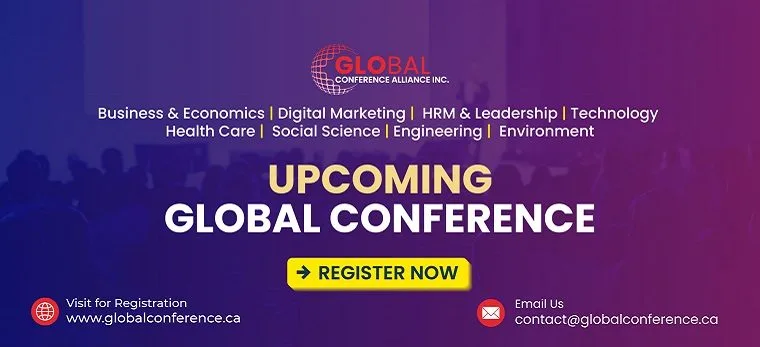Attending a conference can be an exhilarating experience, allowing professionals to network, learn, and share knowledge. Yet, amid the buzz of conversations and presentations, an essential element ensures these events are beneficial for all involved: Conference Etiquette. So, what is conference etiquette?
Well, it refers to a set of behaviors and guidelines that individuals should adhere to when attending or participating in a conference, seminar, or similar professional gathering.
Not only does it guarantee that the event runs seamlessly, but it also shows respect to all participants and cultivates a conducive environment for growth and productivity. By understanding and implementing these guidelines, you can maximize your conference experience and contribute to its overall success.
The Art of Etiquette: Definition and Importance
In its most fundamental form, Etiquette isn’t just about knowing which fork to use at a formal dinner or how to introduce people at a gathering. It’s a reflection of our cultural norms, our respect for others, and our values.
At its core, etiquette is the art of handling social situations in a way that acknowledges and respects others’ feelings. Etiquette is a set of customary codes of polite behavior in society or among members of a particular profession or group.

It covers everything from basic manners, like saying “please” and “thank you,” to more complex social cues that vary from culture to culture. It’s a way to communicate respect, whether by acknowledging someone’s time, space, or opinion.
Here are the importance of etiquette:
- Creates a Positive First Impression: Our manners often speak louder than our words. Proper etiquette can form the basis for a lasting, positive impression, while its absence can leave a memory we’d rather forget.
- Fosters Effective Communication: Proper etiquette reduces misunderstandings and misinterpretations, facilitating clearer and more constructive conversations.
- Promotes Respect: By observing appropriate etiquette, we show respect to those around us. It signals that we value and acknowledge the feelings and opinions of others.
- Navigating Cultural Differences: As our world becomes increasingly globalized, understanding the etiquette of different cultures can aid in bridging gaps, fostering mutual respect, and facilitating effective communication.
- Professional Success: In the business world, proper etiquette can make the difference between clinching a deal, getting that promotion, or forming beneficial networks.
The art of etiquette is more than just an old-fashioned concept; it’s a continuously changing set of guidelines that help us manage the complex web of human interactions. It’s essential in building and maintaining strong, respectful relationships in our personal and professional lives.
What is Conference Etiquette?
Conference etiquette refers to the behaviors and norms that ensure a productive and respectful work environment. It includes punctuality, attentive listening, and appropriate participation. Being familiar with these unwritten rules makes the experience much more enjoyable for everyone. When you conduct yourself properly, you will be able to have meaningful conversations and network effectively.
Another important aspect of conference etiquette is to dress appropriately. Whether the dress code is business formal or casual, attendees should follow it. This shows respect for the event and its participants. It also ensures that no one feels out of place due to their attire.
During sessions, it’s key to minimize distractions by silencing mobile devices. The practice of asking questions is encouraged, but should be done in a respectful manner that allows others time to respond. Taking notes is good practice, as it shows engagement and helps in retaining information. These actions contribute to a more focused and inclusive environment.
A good example of conference etiquette for attendees is to interact respectfully with speakers and fellow participants. It’s beneficial to exchange contact information and follow up on discussions after the event. This broadens professional networks and strengthens relationships within the industry. Remember, a little courtesy goes a long way in making conferences enjoyable for everyone.
Key Requirements for Meeting Basics of Conference Etiquette
Attending a conference means more than just listening to speakers—it’s about making a positive impression. Whether you’re engaging with professionals or participating in discussions, understanding basic etiquette is key. Let’s explore the essential aspects that can help you navigate these events smoothly.
Punctuality: The First Impression
Being on time isn’t just polite—it sets the tone for your professionalism. Arriving late can disrupt sessions and make it harder to engage with others. Always check the schedule in advance and plan for possible delays. If an unexpected situation arises, quietly enter without drawing attention. Early arrivals also provide extra time to network before sessions begin. A well-managed schedule ensures a stress-free experience.
Attentive Listening: The Silent Communicator

Appropriate Attire: Wearing Your Professionalism
Dressing correctly shows that you take the event seriously. While some conferences have dress codes, opting for business or business-casual attire is a safe choice. Clothes should be neat, comfortable, and suitable for long hours of networking. Paying attention to small details, like polished shoes and well-groomed hair, enhances your overall presence. Confidence comes easier when you feel appropriately dressed. The way you present yourself can leave a lasting impact.
Respectful Interaction: Building Bridges, Not Walls
Conferences bring together people from different backgrounds, so respectful communication is key. Being mindful of different perspectives and avoiding controversial topics helps maintain a positive atmosphere. Instead of dominating conversations, encourage others to share their thoughts. At global events like an international conference in Canada, where interactions with professionals from different cultures require extra sensitivity. A friendly and respectful approach makes conversations more meaningful. Small gestures, like a handshake or a simple thank-you, can leave a strong impression.
Digital Decorum: Balancing Tech and Etiquette
Using technology wisely ensures you don’t come across as rude. Keeping your phone on silent prevents unnecessary disruptions. If you need to take a call, step outside instead of disturbing the session. Posting about the event on social media can be beneficial, but overdoing it may seem unprofessional. Recording presentations without permission is usually discouraged, so always check guidelines. A mindful approach to technology keeps your focus on the event.
Feedback Constructively: The Growth Catalyst
Sharing feedback helps improve future conferences, but delivery matters. If asked for input, be honest but polite. Instead of only pointing out flaws, suggest practical improvements. Complimenting well-organized aspects also adds value to your feedback. Whether it’s through surveys or direct conversations, constructive input is always appreciated. Thoughtful feedback helps organizers create even better experiences.
Benefits of Having a Conference Etiquette
In the sphere of professional gatherings, etiquette is the unseen guiding force. Proper conference etiquette isn’t mere formality; it underpins successful interactions. This foundation has multiple benefits, ensuring conferences reach their full potential.
Promotes Effective Communication
Clear communication is the lifeblood of conferences. Proper etiquette reduces misunderstandings and misinterpretations. This paves the way for productive discussions and mutual understanding.
Enhances Professional Image
First impressions can leave lasting impacts. By practicing good etiquette, individuals project professionalism and dedication. Such an image can influence future collaborations and opportunities.
Ensures Smooth Event Flow
Disruptions can halt the momentum of any conference. Adhering to etiquette minimizes such interruptions, ensuring a smooth flow. Organizers and attendees alike benefit from this streamlined experience.
Encourages Inclusivity and Respect
Diverse views shape the richness of conferences. Etiquette ensures everyone’s voices are heard, promoting inclusivity. Respectful interactions strengthen networks and relationships.
Maximizes Networking Opportunities
Conferences are hubs for networking. With proper etiquette, people can connect and form meaningful relationships, which can lead to future collaborations. Remember, even the smallest gesture of respect during a conference opening speech can set the tone for the entire event.
With proper conference etiquette in play, attendees, speakers, and organizers can unlock the full potential of these professional gatherings. This framework not only ensures the smooth flow of events but also lays the groundwork for fruitful professional relationships.
Conference Etiquette: Dos and Don’ts for Attendees
Conference etiquette plays a key role in creating a professional and respectful environment for all attendees. Knowing the dos and don’ts can help participants make the most of the event. Here are some essential tips to keep in mind during any conference.
Dos
- Arrive on Time: Punctuality shows respect for the event and allows you to participate fully without disrupting others.
- Dress Appropriately: Follow the dress code, whether it’s business formal or casual, to present yourself professionally and comfortably.
- Engage Actively in Discussions: Ask relevant questions and share insights to contribute meaningfully without dominating the conversation.
- Network Thoughtfully: Exchange contact details and follow up on discussions to build lasting professional relationships.
- Listen Attentively: Give full attention to speakers and fellow attendees, which helps in gaining valuable insights and knowledge.
- Keep Phones on Silent: Reduce distractions by keeping your phone on silent mode, ensuring focus on the ongoing sessions.
- Respect Everyone’s Time: Be concise in your questions and comments to allow others to share their thoughts.
Don’ts
- Avoid Interrupting Speakers: Wait for the right moment to ask questions without interrupting the speaker’s flow.
- Don’t Overuse Technology: Excessive use of phones or laptops can be distracting; use them only when necessary during sessions.
- Don’t Monopolize Conversations: Allow others to speak and share their views, ensuring a balanced and inclusive discussion.
- Don’t Ignore Networking Opportunities: Skipping networking sessions can be a missed chance to expand your professional connections.
- Avoid Dressing Inappropriately: Wearing overly casual or formal attire can make you stand out uncomfortably. Always follow the recommended dress code.
Conference etiquette is crucial for ensuring a smooth and productive event. Understanding and applying these dos and don’ts highlights the importance of conference etiquette in creating a professional environment.
Bottom Lines
As the world of professional gatherings continues to evolve, one constant remains pivotal: the essence of conference etiquette. Figuring out what is conference etiquette? transcends mere decorum.
It embodies the very principles of respect, communication, and professionalism that are crucial to any successful event. Finding our way through the corridors of conferences becomes infinitely more rewarding when we uphold these timeless guidelines. They not only elevate our personal experiences but also contribute immeasurably to the collective success of these events.
In adhering to conference etiquette, we create spaces where knowledge flows seamlessly, relationships are forged genuinely, and the spirit of collaboration thrives. As attendees or organizers, the responsibility lies with us to champion this art and ensure it remains at the heart of every professional gathering.






